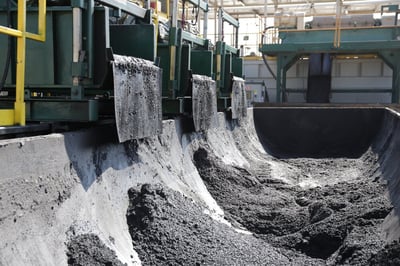 Upon first visit to a rig site the first thing you will notice is the abundance of tanks. Tanks to store fuel and additives. Tanks for water. Tanks for the frac operation. And, of course, the tanks involved in every step of drilling fluids management—tanks for capture, storage and disposal of different drilling fluids and solids and tanks to mix and recondition the drilling mud. Selection, delivery and hook up of the various tanks is of prime importance to a successful operation.
Upon first visit to a rig site the first thing you will notice is the abundance of tanks. Tanks to store fuel and additives. Tanks for water. Tanks for the frac operation. And, of course, the tanks involved in every step of drilling fluids management—tanks for capture, storage and disposal of different drilling fluids and solids and tanks to mix and recondition the drilling mud. Selection, delivery and hook up of the various tanks is of prime importance to a successful operation.
Tanks for fluid management while drilling
There are three variations of oil rig mud tanks for drill cuttings and solids control. For tanks positioned beneath the drying shakers, sloped bottom tanks are the optimum choice. This proprietary design, available only from Panther, helps the mud flow directly to the suction line. Round bottom and flat bottom tanks are also available to capture cuttings and liquids coming off the drying shakers and centrifuges.
Slope Bottom Tanks
Slope Bottom Tanks are ideal for placement beneath the drying shakers. These tanks are designed to be used under the shale shakers and help the mud flow towards the suction line where it is sent to other equipment for further processing and then reintroduced back into the mud system.
Round Bottom Tanks
Round Bottom Tanks are optimal for holding either liquids or solids during the solids control process. The design allows for an easy scoop of solids by a track hoe to transfer solids from one tank to another or from a tank to a truck for haul-off and disposal.
Flat Bottom Tanks
Flat Bottom Tanks hold a greater volume and can be used to store either liquids or solids during the solids control process. Depending on the project, this alternative may require fewer tanks on site.
Bulk Tanks
Bulk tanks are different in appearance in that they are vertical standing, similar to a grain silo. Bulk tanks hold barite or bulk gel, both additives used to maintain the drilling mud properties when formation changes are encountered.
Other wellsite tank applications
Frac Tanks
Frac tanks hold water or proppant during well fracturing operations. Material from the frac tanks is connected by a hose to a pump that mixes the material to a slurry that is then pumped at high pressure to open the formation and allow gas or oil to flow to the surface. Frac tanks come in a variety of sizes and capacities.
Completion Fluids
During completion or workover operations, tanks are needed to store the appropriate fluids necessary to help control wellbore pressures and minimize formation damage when re-entering the well.
Production Operations
Once production is established, a full line of production chemicals and additives will be needed to help maintain production. Mud mixing system tanks will be needed to store and mix the chemicals and additives necessary to restore or enhance production levels.
Wellsite Considerations
Regardless of the type of tank and application, there are common considerations for all tanks.
- Placement of tanks at the wellsite for oilfield trucking, taking into account the rig footprint and truck positioning during loading and haul off
- The sizes and capacity of tanks meet or exceed the expected amount of cuttings and disposal
- Costs of tanks vs AFE
- Selection, scheduling and delivery of tanks
- Rent, lease or purchase
- Condition of tanks and all required permits
At Panther Fluids Management, we manage the operations of wellsite drilling fluids including the handling of liquids and solids in one of our newly designed open top tanks. We select tanks based on the application and project, but will also work with you to provide the right tank for a job already underway. Standard size tanks are in stock and ready for quick delivery to your location. Our mud tanks measure approximately 40 ft long by 8 ft wide and 4.5 ft high. For more unique project requirements, our team can custom design and fabricate a tank to fit your exact specifications and drilling pad footprint. Tanks can be rented, leased or purchased.
In addition to offering a wide variety of tank sizes for any wellsite application, we consult with the operator to design the best fluid system for each well; including everything from discrete services like mud and shaker screens to fluids engineering to complex closed-loop systems for solids control to haul-off and disposal. Our drilling fluid systems are backed by years of experience and have consistently lowered overall mud costs for clients. We understand the challenges of each well, formation and rig and can adapt the fluid system to any changes that may be encountered while drilling.
Contact Panther Fluids Management today for the latest in drilling fluids technology.

